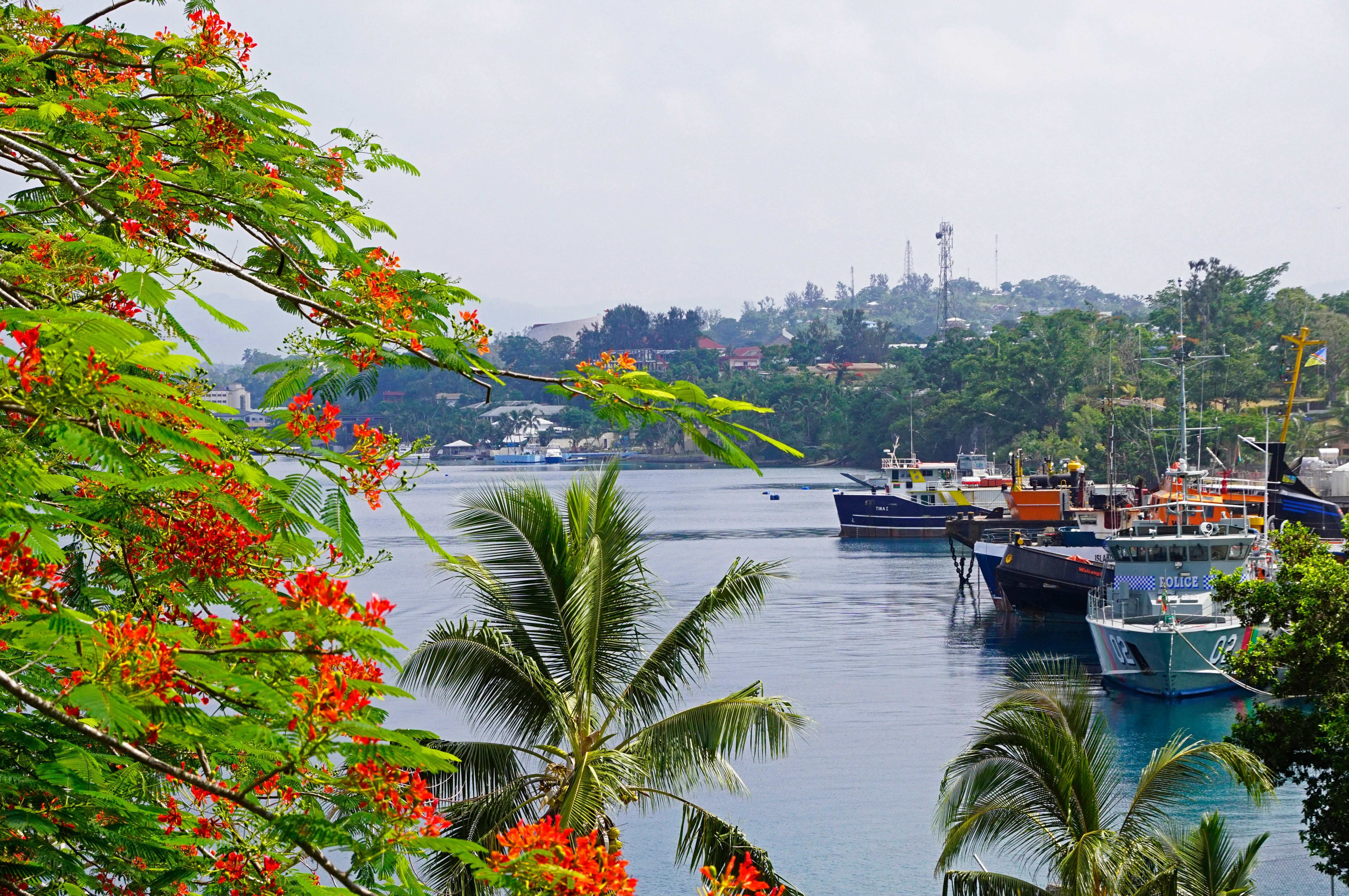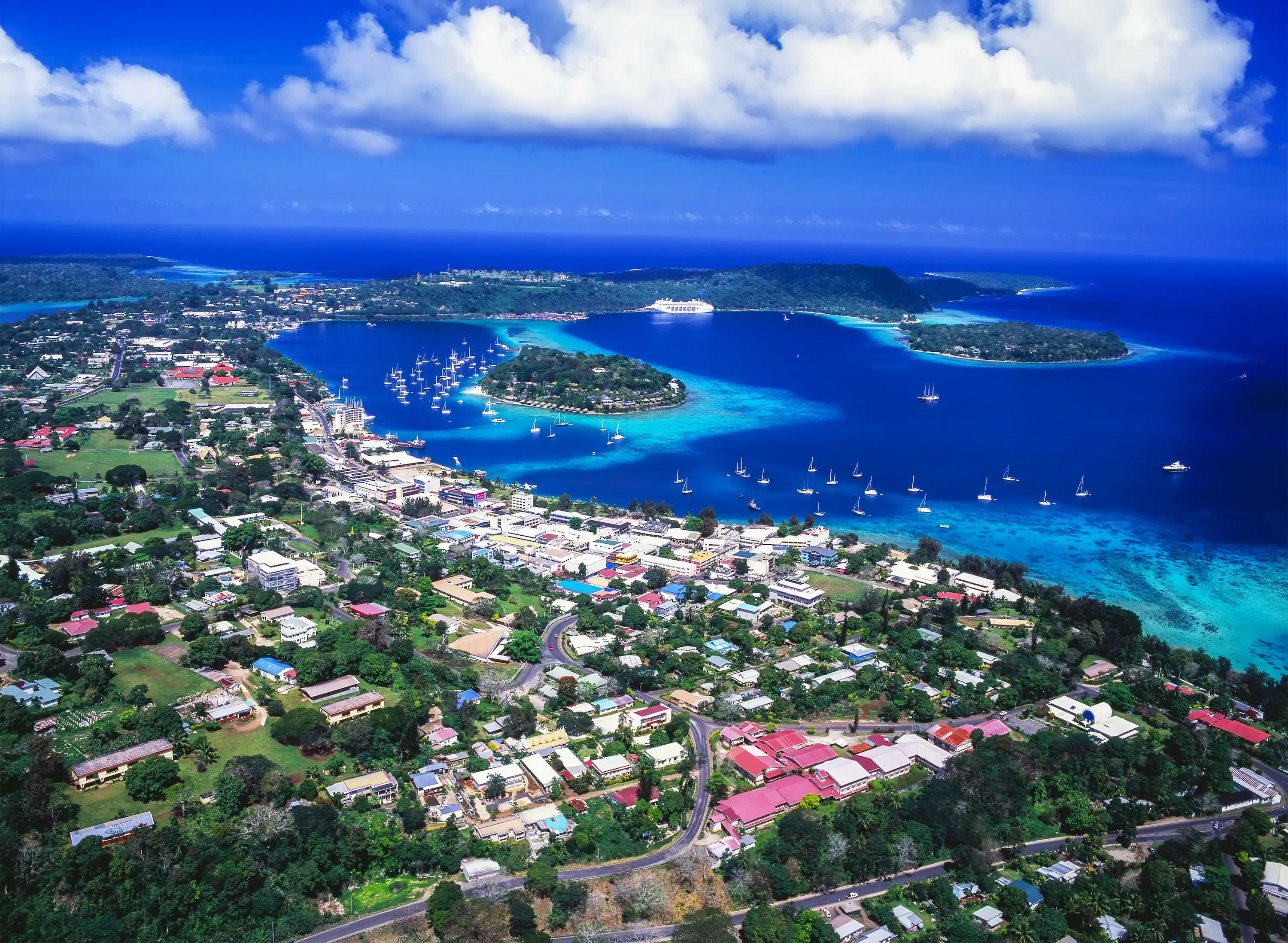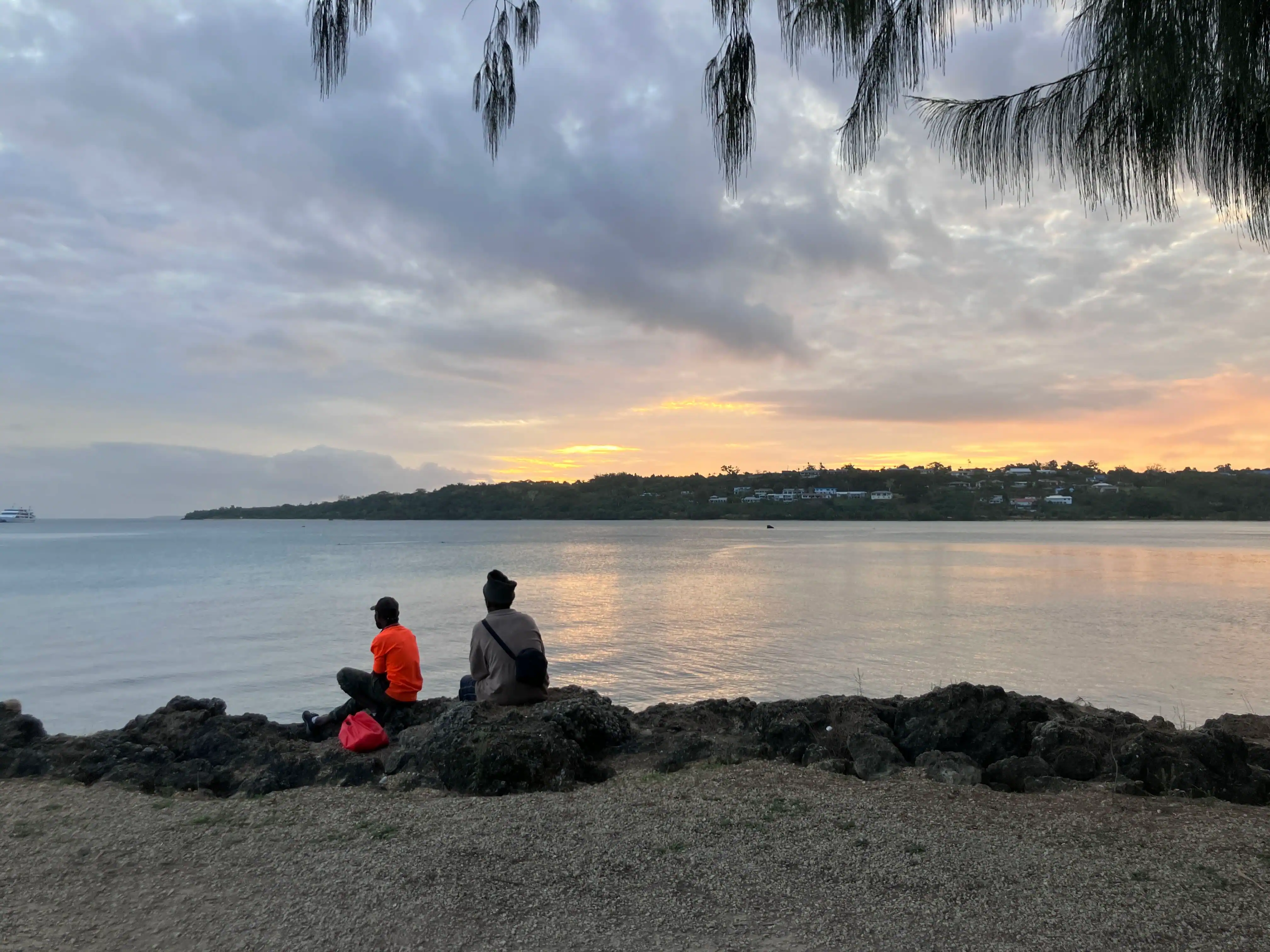
Environment
Building island climate resilience

Migrants to Port Vila from elsewhere in Vanuatu build connections with people and places using practices that relate to the land
Published 15 October 2024
Vanuatu’s capital city, Port Vila, is growing rapidly as people migrate from one of the 83 islands that comprise the archipelago nation.
The city can be a big contrast for these migrants, known in the local Bislama language as man kam. Port Vila is busy, chaotic and full of many things largely unavailable on the outer islands like universities, hospitals, imported goods and more opportunities for waged labour.

Aspiring participants to Australia and New Zealand's regional worker schemes also often spend time in Port Vila to organise their passports, visas, health checks and to connect with an agent.
One of the ways migrants settle into town is by establishing relationships with the land, often using plants with specific purposes and social significance.
Although, no matter what they do, the land where they build homes and gardens will never be fully theirs.
This is because nearly all land in Vanuatu is held by customary owners, man ples, and managed through kastom, the Indigenous ni-Vanuatu way of doing things.

Environment
Building island climate resilience
The independence movement in the 1970s, which culminated in independence from the joint British and French Condominium in 1980, returned land to Indigenous hands from the foreign settlers who had established farms and plantations.
So, when man kam from elsewhere in Vanuatu come to town, they build homes and gardens on someone else’s customary land.
The land cannot be bought or sold and formal leases are rare. Instead, most man kam make formal customary agreements with man ples for access to land.
Making relationships with the land is not just about making the city feel like home, it is also about leading a good life according to kastom.

In Vanuatu, where 80 per cent of the population depends on subsistence agriculture, looking after the land means the land will look after you.
And maintaining good relationships with the customary landowners on whose land you’re living goes a long way to prevent mass evictions of migrant communities.
These are a growing problem in town when there are disputes over ownership and where land is growing in value, especially along the coastline and on major roads, where investors want to build resorts, stores and factories.
On a recent trip to Port Vila, I worked with a group of 10 migrants to the city to understand the ways they and their peers create connections with the land.
We followed a method called photovoice, using cameras to document places, objects, and people who made them feel connected. Then the photographers sorted the images and told stories about what they meant.

The last part of the project comprised two workshops with migrants in Port Vila. A few important themes emerged from our discussions, including:
Man kam use a range of techniques to mark the edges of their land.
Apart from wire, concrete, or wood, some fences are made from plants that are well known to signify private property. The main varieties are a hedging plant called nalalas and hibiscus.
Nalalas grows fast and the new leaves can even be cooked and eaten. Whereas hibiscus grows very thickly, creating a visual screen.
For man kam, planting hedges and erecting fences is important for communicating to others that they have the right, following their customary agreement, to live on this land.
Planting nalalas to strengthen the wire for security. Nalalas is also used like kabis [island cabbage]. If the wire falls down, the nalalas will stay and the yard and the family will be safe.
Quote from Lilane, member of the Port Vila photovoice project. Picture: Supplied
When they have enough space, man kam often plant vegetable gardens in the city. Eating home-grown food is cheap, healthy and reminds migrants of life on their home islands.
Most people eat lots of root crops, like taro, manioc, and cassava, which are grown underground and usually cooked underground wrapped in leaves and placed among hot stones.
In doing this, man kam are connecting with the land in a very significant way. The land and humans become tied together in cycles of care.
Here is a taro plant. You can harvest it to eat or people who don’t have any work can make a small garden like a farm and sell taro at the market.
Quote from Georgie, member of the Port Vila photovoice project. Picture: Supplied
Migrants to the city might find it easy to lose touch with customary ways of life, especially since their kastom practice and knowledge are closely connected with their home island.
However, man kam show that they can hold onto kastom in their new home. Being in the city changes things, of course, but continuing to practice kastom where they can is important to man kam and their sense of self.
Lala’s image below captures a customary land agreement ceremony between two man kam which demonstrates the ongoing importance of valuable traditional goods like mats which can be exchanged to establish and maintain relationships.
She describes how this land agreement is as much about a connection between two people (and their communities) as a transaction.
This is a kastom ceremony between men from Ambae and Tongoa. The older man has some land and the young man needs space for his business. They are building peace and connection.
Quote from Lala, member of the Port Vila photovoice project. Picture: Supplied
Lots of images showed community spaces or roads that connect homes.
Migrants usually live in large communities, reflecting the structure of the villages they left behind on the islands. Communities might be all from the same island and, therefore, speak a common language, while others might be mixed with people from different islands.
Community meeting spaces like nakamals are where the community gathers to talk and drink kava, a drink made from ground roots of the kava plant which is important in spiritual, social, and political life in the Pacific.
Other images of roads and bridges offer symbolic representations about connection and movement between places.
Here is a bridge and the river, it gives a connection. We need to build a bridge to have this connection, to move people between houses and the village.
Quote from Jimmy, member of the Port Vila photovoice project. Picture: Supplied
Some customary agreements about land are old, but the descendants of migrants remember them because they help them hold on to a connection with the place.
The stories also form the basis of their ongoing right to live on the land. Things like trees planted as part of a customary agreement last longer than barbed wire fences and are an everyday reminder to the descendants of the history of their family’s life in town.
When land agreements aren’t written down, these oral histories are the important record of past decisions.
This is a natapoa tree, or ‘natalie’ in Bislama. A man told me his great grandfather planted it to mark where he lived, nearly 300 years ago. He came and did kastom to live on the land.
Quote from Christopher, member of the Port Vila photovoice project. Picture: Supplied
For the people involved in this project, being able to tell their stories is important. The images show how man kam respect the land, their culture and the customary owners.
They are also developing new systems of urban governance that are inclusive of migrant communities.
At the request of the people involved, the images will be displayed in an exhibition in Port Vila. The hope is that the exhibition will encourage other people in town to understand the perspectives and experiences of man kam.
They want to invite politicians, local chiefs, and landowners to see the images to encourage dialogue about the issues of urban growth, migration, and evictions.
More broadly, these stories about establishing relationships might be a useful comparative example for other studies of migration and urbanisation.

Sciences & Technology
Island encounters
Migration to Port Vila shows the immense effort that some migrants put into settling into their new home by establishing relationships with the land in terms that are meaningful to them.
In doing so, they challenge the idea that they are living in ‘informal settlements’.
These stories show that creating a sense of belonging in a new place is possible. As mobility increases worldwide, including migration increasingly driven by climate change, these stories show how it’s possible to make a home in a new place.
The images above and many more will be displayed at the Melbourne Centre for Cities, Baldwin Spencer Building, University of Melbourne from 23 October 2024 until March 2025. The exhibition will be launched with a talk and refreshments on Wednesday 23 October at 3.30 pm in the Glyn Davis Building (MSD). Register to attend here.
This research project is funded by the Australian Research Council.
The images in this article will form part of a future publication of a visual essay. Image captions shown here have been shortened for brevity.




